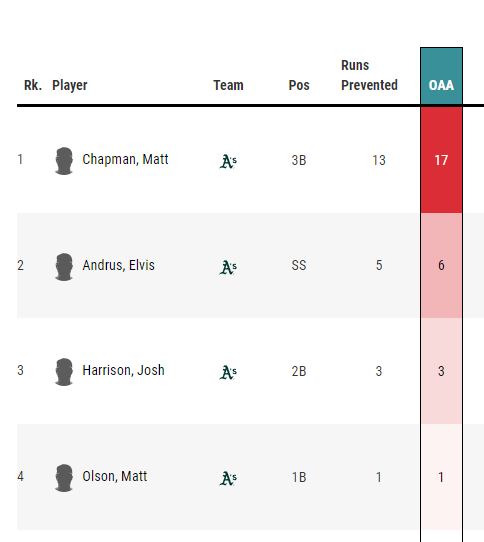Editor’s Note: With MLB owners forcing us to miss games in 2022, I have pledged to write a Going Deep article every day until the lockout is lifted. Please consider supporting Pitcher List with a PL+ subscription to help us survive through these difficult months.
I had a dumb idea at 11:00 pm Monday night. I decided to make this pledge even more ridiculous by giving myself a self-implemented deadline (hey that sounds familiar) of sixty minutes to write these articles as I live stream the process on Twitch. Today marks the first of my best attempt at replicating Iron Chef as I didn’t know who I’d be writing about until I started the clock. Please forgive the quality dip that comes next.
The PL+ community elected to go for Frankie Montas today and oddly enough, I think he’s been one of the more overlooked starters in discussions this off-season. Why? Because he’s boring. There’s little flavor in what he does—pounds the zone with fastballs and hopes he has a feel for his splitter and slider—and that makes him good but not great. We all chase greatness, like Phish Food Ice Cream and while we’re fine if they have Milk & Cookies, it’s just not the same. We should just be happy to have Ben & Jerry’s in our hand, but hey, that’s the perception of happiness, you know?
I’m sorry. Frankie Montas, right. He does things and let me tell you about those things.
The Fastball Foundation
At his core, Montas is all about sinkers and four-seamers. Do I wish this was different? Absolutely—that sinker has been a thorn in his side and while he’s learned to pull it back over the years, he still tosses the dang thing 30% of the time.
But let’s look at these pitches individually to get a sense of how they’re allowing Montas to survive in the majors:
Montas still uses that sinker more than the heater despite the higher averages allowed, yet it does allow less hard contact and those hits are mostly on the ground instead of the air: Montas allowed just five longballs across 916 sinkers thrown last year.
The plan of attack is clear—toss sinkers early in hopes of getting a quick out (18% Early BIP rate!) while the four-seamer is used more as a strikeout offering deep in the count. But boy does he get a ton of strikes with these pitches. Having 58% of your pitches return a 71% strike rate gives Montas a chance to survive until late in the game—if those strikes are returning outs in the field, hellooooo seventh frame—and it sets the table for excellence if his splitter and slider perform well.
A Quick Reprieve
Before I get to splitter and slider, I feel like this is the perfect time to emphasize what happens when Montas has to survive only with fastballs versus when he has proper support from his splitter and/or slider.
We had a taste of that at the beginning of the 2021 season as Montas couldn’t find his splitter feel until the end of May. Check out these splits:
That’s apparent right? You don’t need me. Montas was vastly better once he improved his splitter (FS) and slider (SL), turning Montas from a guy lost on an island hurling figurative bottles filled with sinkers and four-seamers into a twist movie where the “island” is an allegory for our digitized modern society living inside your bedroom and not stepping out into the real world around you.
ANYWAYS, Montas needs that splitter and slider to perform at a high level and the question y’all should be asking is clear. Will Montas have those pitches next year? Well, you should also be asking whether Montas will continue his trend of throwing fewer sinkers, but I digress. You want splitter and slider talk now and let’s get to it.
Splitter
The one that matters most here is that splitter. I’ve incessantly expressed my concerns about relying on splitters as a primary secondary pitch (still a Top 5 phrase in my book) as splitters are the hardest pitches to consistently grip + each release will be slightly different. It’s a silly hard thing to throw with precision.
Only Kevin Gausman in my view is a master of the pitch in the majors currently, though Montas is certainly in contention for runner-up. Since adding the pitch in 2019, he’s consistently earned SwStr rates above 22%, peaking last year right under a 27% rate—the league average splitter returned a 19% SwStr rate last year.
It gets better. Montas allowed just 9.4% hard contact last year (insane) and limited flyballs off the pitch to just 17%. It’s a phenomenal offering and looks like this when executed correctly:
https://gfycat.com/sphericalunkemptindochinahogdeer
But as I said before, he doesn’t always have it. This is a feel pitch, after all, and if that feeling is gone, he needs to rely on…the slider.
The Curmudgeon Slider
Ask yourself, does Montas have a good slider? I’m not entirely sure he does. Here’s how it performed last year:
On one hand, the pitch was able to boast a 30% CSW. On the other, there’s everything else. As Montas’ signature breaker, the pitch failed to get strikes a whole lot, it allowed a ton of favorable contact to hitters (ICR = Ideal Contact Rate, you should read about here—48.5% is horrid) and was overall incredibly blegh.
I mean, it even looks blegh:
https://gfycat.com/emotionalthirdbichonfrise
However, it’s something different from the endless fountain of fastballs, which then amplifies Montas’ four-seamer to do damage later in counts. If Frankie featured just heaters and splitters, batters would constantly sit fastball and smack sinkers even harder than they currently do. Having this slider allows him to feature a 70% strike rate on fastballs and get away with it.
That final point is the final column of this article’s atrium. Let’s go with that—this article is the relaxing entryway to whatever your life is. So what is that atrium? Why it’s the greatest strength of Frankie Montas.
He Survives
Simply put, Montas is in a fantastic situation in Oakland. He has a wonderful home park and some great defenders behind him who vacuum up all the grounders he induces with that sinker and splitter (46% overall groundball rate last year):

With that confidence, Montas has all the chances to go deep into games. He ranked ninth last year with 187 innings thrown. His 94 pitches per game sits ten pitches higher than the league average starter. It’s all rooted in the ability of his fastballs to get strikes, leading to more opportunities to get outs. We (read: I) overlook this skill a good amount as we (I) romanticize strikeout arms despite high walk rates consistently. Montas nearly averaged six frames per start last season, a product of his four-pitch mix. Praise him for it.
What’s Next For Montas?
The most likely outcome is more of the same from Montas. More fastballs earning a 70%+ strike rate, with volatility coming throughout the year if the splitter disappears and the slider doesn’t do quite enough. However, you’re going to see plenty of stretches where splitters are earning whiffs galore, allowing Montas to consistently go six frames with a handful of seven full frames as well.
Who knows, maybe Montas could limit that sinker close to 20% usage, emphasizing his effective four-seamer to open the door for more consistent success. He could also struggle to find the splitter for a long stretch, creating more of the April/May disaster we saw last year. It outlines a pitcher I don’t see excelling to the high standards of definitive aces, but a floor high enough for the Athletics to trust as a #2/#3 SP through a full year.
Photo by Samuel Stringer/Icon Sportswire | Adapted by Justin Paradis (@JustParaDesigns on Twitter)

